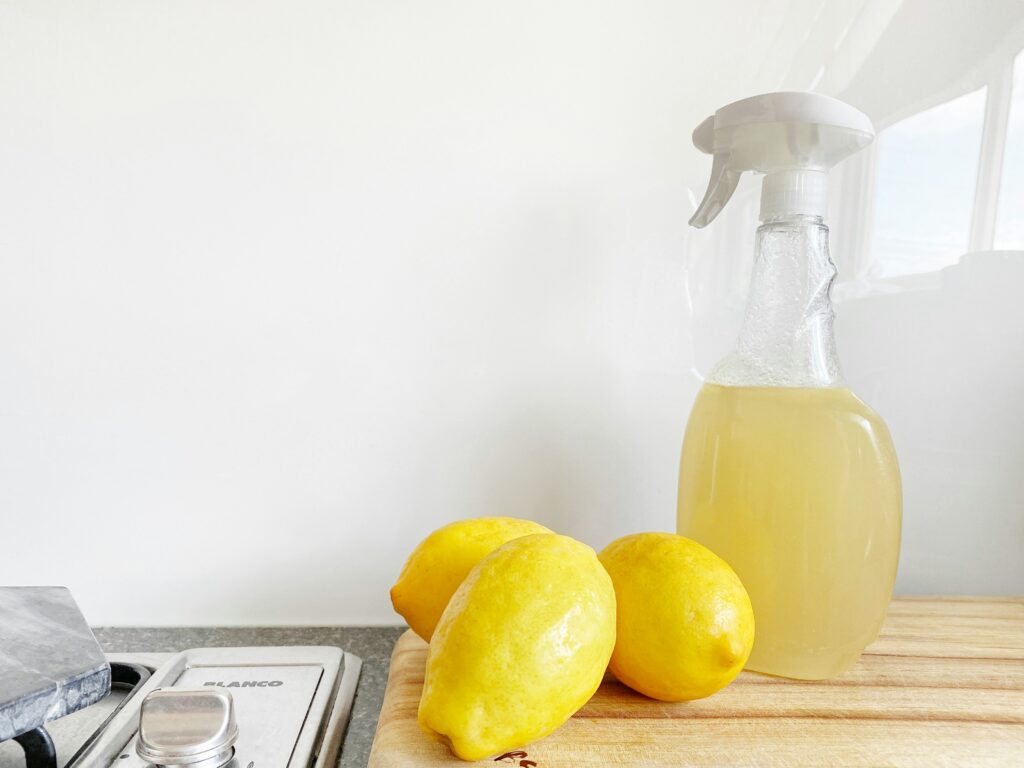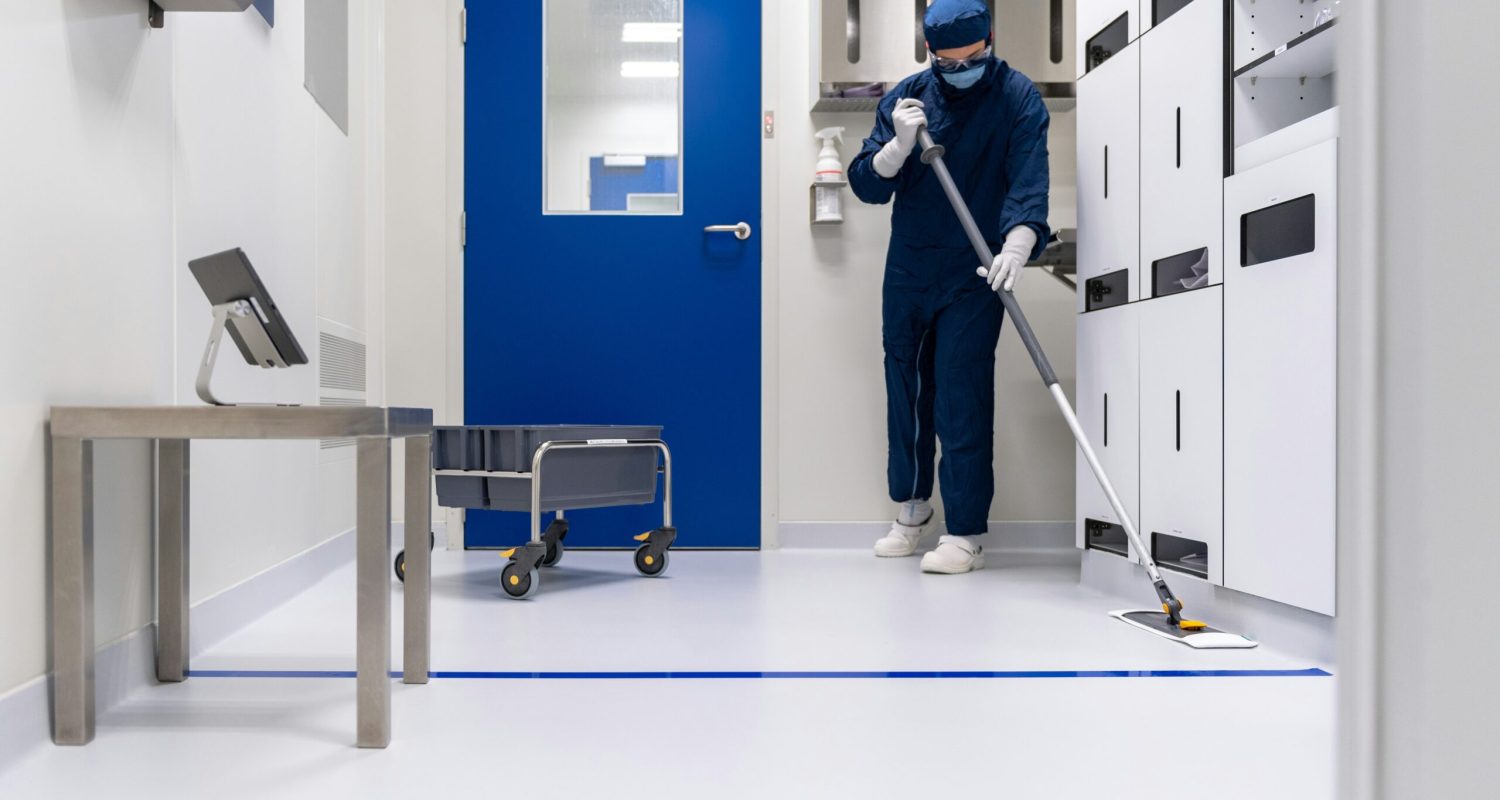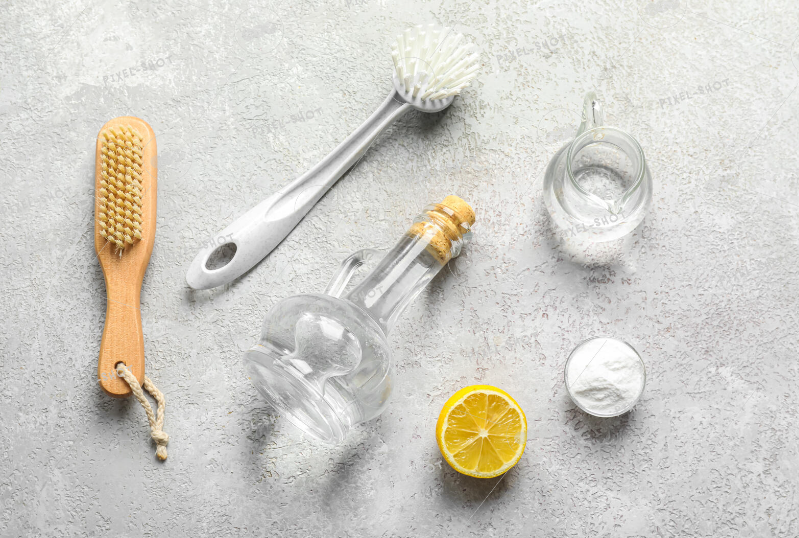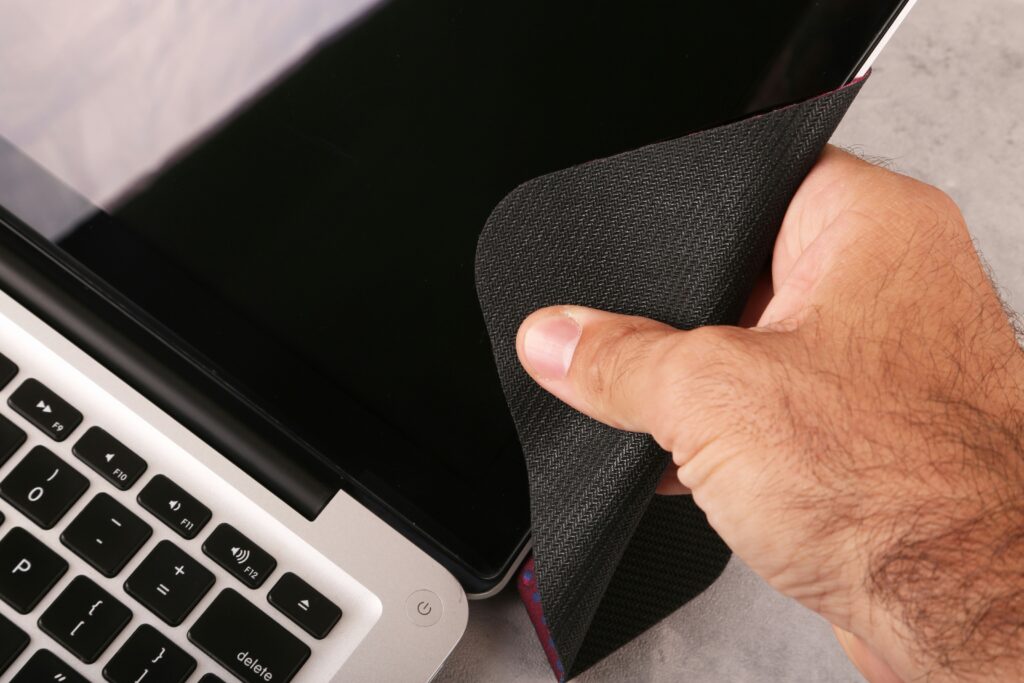Chemical-Free Cleanliness: Discover the Power of Natural Cleaning Recipes
In a world increasingly concerned about the harmful effects of chemicals, natural cleaning alternatives have gained significant popularity. From kitchen countertops to bathroom tiles, people are turning to chemical-free solutions that effectively clean and promote a healthier living environment. Enter the power of natural cleaning recipes.
These recipes, using everyday household ingredients like vinegar, baking soda, and lemon juice, offer a safe and eco-friendly way to keep your home spotless. But it’s not just about avoiding chemicals – these natural solutions often prove just as effective, if not more so, in tackling stubborn stains and grease.

Discover the wonders of chemical-free cleanliness as we delve into the world of natural cleaning recipes. From homemade all-purpose cleaners to DIY carpet deodorizers, we’ll provide you with the knowledge and tips to create your green cleaning arsenal. It’s time to swap out those harsh chemical products for gentler, earth-friendly alternatives that give your home a sparkling clean while prioritizing your well-being.
Join us on this natural cleaning journey and uncover the power of ingredients Mother Nature has granted us. Let’s embrace a cleaner, greener lifestyle together.
The importance of chemical-free cleaning
Maintaining a clean and tidy home is essential for aesthetic purposes and our health and well-being. However, most commercial cleaning products on the market contain various harsh chemicals that can adversely affect our health and the environment. Chemicals like chlorine, ammonia, and phthalates are commonly found in these products and have been linked to respiratory issues, skin irritations, and even long-term health problems. By choosing chemical-free cleaning, you can feel reassured about the potential long-term health benefits it offers.
Chemical-free cleaning offers a safer alternative that eliminates the risks associated with traditional cleaning products. By using natural ingredients, we can avoid exposing ourselves and our loved ones to these harmful substances. What’s more, natural cleaning recipes are often more cost-effective, as the ingredients are readily available and inexpensive, encouraging you to make the switch.
Understanding the dangers of chemical cleaning products

The dangers of chemical cleaning products extend beyond their immediate effects on our health. These products often contain toxic substances that can contaminate the air and water we breathe. When we use chemical-based cleaners, the residues left behind can find their way into our homes’ indoor air quality, leading to poor air circulation and potential respiratory problems.
Furthermore, when these chemicals are rinsed down the drain, they can enter our water systems and harm aquatic life. They can also contribute to water pollution and disrupt the delicate balance of ecosystems. Using natural cleaning recipes can minimize our environmental impact and create a safer living space for ourselves and future generations.
Benefits of natural cleaning recipes
Natural cleaning recipes offer a multitude of benefits that go beyond just being chemical-free. Here are some advantages of incorporating natural cleaning into your routine:
- Healthier living environment: Natural cleaning recipes are free from toxic chemicals, making your home healthier. You won’t have to worry about inhaling harmful fumes or coming into contact with irritants that can cause allergies or other health issues.
- Cost-effective: Most natural cleaning recipes use simple ingredients already present in many households. Vinegar, baking soda, and lemon juice are just a few examples of everyday items that can be used to create effective cleaning solutions. Utilizing these ingredients can save money on expensive commercial cleaning products.
- Reduced environmental impact: Chemical-based cleaning products contribute to pollution and ecological degradation. By choosing natural cleaning recipes, you can help reduce your carbon footprint and minimize the adverse effects on the environment. Natural ingredients are biodegradable and do not threaten aquatic life or ecosystems.
- Versatility and effectiveness: Natural cleaning recipes can be used in various areas of the house, from kitchens to bathrooms and everything in between. These recipes are often just as practical, if not more so, than their chemical-laden counterparts. By experimenting, you can find the perfect natural cleaning solution for each task.
Common ingredients used in natural cleaning recipes
When it comes to natural cleaning, a few common ingredients can work wonders in tackling dirt, grime, and stains. Here are some staple ingredients that you’ll often find in natural cleaning recipes:

- Vinegar: Vinegar is a powerhouse ingredient, a versatile tool for various cleaning tasks. Its acidic properties make it an excellent natural cleaner, effective at removing even the toughest grease, mineral deposits, and mildew. Mix vinegar with water in a spray bottle for an all-purpose cleaner that can confidently be used on countertops, windows, and other surfaces.
- Baking soda: Baking soda is a cleaning superhero with multiple uses. Its mild abrasive properties make it ideal for scrubbing surfaces, removing stains, and deodorizing. Sprinkle baking soda on carpets before vacuuming to eliminate odors, or create a paste with water to scrub grout and tiles.
- Lemon juice: This natural disinfectant and deodorizer is a must-have for freshening your home. Its acidic properties make it effective at cutting through grease and grime. Use lemon juice and water to clean cutting boards, remove stains from countertops, or freshen up your garbage disposal. Essential oils: These not only add a pleasant scent to your cleaning recipes but also offer additional cleaning properties. For instance, tea tree oil, with its antibacterial and antifungal properties, is great for cleaning bathrooms. Lavender oil can add a calming aroma to homemade laundry detergent, while peppermint oil can deter pests.
- Essential oils: Essential oils add a pleasant scent to your cleaning recipes and offer additional cleaning properties. Tea tree oil, for example, has antibacterial and antifungal properties, making it great for cleaning bathrooms. Lavender oil can add a calming aroma to homemade laundry detergent, while peppermint oil can deter pests.
Homemade natural cleaning recipes for different areas of the house
Now that we’ve covered the basics let’s explore some simple and effective natural cleaning recipes for different areas of your home. From the kitchen to the bathroom and beyond, these recipes will help you achieve a sparkling clean without harsh chemicals.Lorem ipsum dolor sit amet, consectetur adipiscing elit. Ut elit tellus, luctus nec ullamcorper mattis, pulvinar dapibus leo.
Kitchen:
- All-purpose cleaner: Mix equal parts white vinegar and water in a spray bottle. This mixture can be used on countertops, stovetops, and appliances. For stubborn stains, sprinkle baking soda on a damp sponge and scrub gently.
- Grease cutter: Combine 1/2 cup of vinegar, 1/4 cup of lemon juice, and 1 cup of warm water in a spray bottle. This solution works wonders on greasy stovetops, microwave interiors, and range hoods.
- Oven cleaner: Combine baking soda and water to create a paste, then spread it over the interior of your oven. Let it sit overnight, and the next day, wipe away the paste with a damp cloth. For extra stubborn stains, spray vinegar on the paste before wiping.
Bathroom:
- Toilet bowl cleaner: Sprinkle baking soda around the inside of the toilet bowl, then pour vinegar over it. Let the mixture sit for a few minutes, then scrub with a toilet brush and flush.
- Showerhead descaler: Fill a plastic bag with vinegar and secure it around the showerhead using a rubber band. Let it sit overnight, remove the bag and rinse the showerhead with water.
- Tile and grout cleaner: Create a paste using equal parts baking soda and water. Apply the paste to the grout lines, scrub with a brush, and rinse with water. Add a few drops of tea tree oil to the paste for extra cleaning power.
Living room:
- Carpet deodorizer: Sprinkle baking soda liberally over your carpets and let it sit for at least 15 minutes before vacuuming. Baking soda helps absorb odors, leaving your carpets smelling fresh.
- Wood furniture polish: Mix olive oil and lemon juice in a spray bottle. Shake well and apply a small amount to a microfiber cloth. Gently rub the mixture onto wooden furniture to restore shine and remove dust.
- Glass cleaner: Combine 1 cup of water, 1/4 cup of vinegar, and one tablespoon of cornstarch in a spray bottle. Shake well before each use, and use this solution to clean windows, mirrors, and glass tabletops.
Tips for effective natural cleaning

file natural cleaning recipes are safe and effective; there are a few tips and tricks that can help you achieve the best results:
- Test in inconspicuous areas: Before using any cleaning solution on a surface, it’s always a good idea to test it in an inconspicuous spot. This will ensure that the solution doesn’t cause any damage or discoloration. Learn more about testing cleaning solutions from Good Housekeeping’s Cleaning Tips.
- Use microfiber cloths: Microfiber cloths are excellent for natural cleaning as they trap dirt and dust without chemical cleaners. They can be used dry for dusting or slightly dampened for cleaning surfaces. Discover the best microfiber cloths for every use at Wirecutter.
- Allow time for the solution to work: Some natural cleaning solutions may require some time to break down stains or grime. To maximize its effectiveness, let the solution sit for a few minutes before wiping or scrubbing. Healthline’s Guide to Natural Cleaning provides insights on the effectiveness of natural cleaners.
- Avoid mixing certain ingredients: While many natural ingredients work well together, some combinations are best avoided. For example, mixing vinegar and hydrogen peroxide can create a corrosive acid. Always research and ensure compatibility before combining ingredients. Read about safe combinations at EcoWatch’s Cleaning Tips.
- Store homemade cleaners properly: Natural cleaning solutions should be stored in airtight containers in a cool, dark place. Label each container with its contents and date of creation to ensure it is used within a reasonable time frame. Learn proper storage techniques from Martha Stewart’s Storage Solutions.
How to incorporate natural cleaning into your daily routine
Switching to natural cleaning doesn’t have to be a daunting task. Here are some simple ways to incorporate it into your daily routine:
- Make a cleaning schedule: Create a schedule that includes daily and weekly tasks. Assign specific natural cleaning recipes to each task, ensuring you regularly cover all areas of your home.
- Prepare natural cleaning solutions in advance: Spend some time each week preparing natural ones that you can quickly grab and use. Having them readily available will make sticking to your natural cleaning routine easier.
- Educate your family: Involve your family members in learning about the benefits of natural cleaning. Encourage them to use natural cleaning recipes and explain how they contribute to a healthier living environment.
- Research eco-friendly cleaning tools: Look for eco-friendly tools and accessories to complement your natural cleaning routine. From biodegradable sponges to reusable microfiber cloths, plenty of options are available to make your cleaning routine even greener.
Natural cleaning products available in the market
Plenty of eco-friendly cleaning products are available in the market if you’re not inclined to make your own natural cleaning solutions. These products are specifically formulated to be free from harsh chemicals while providing effective cleaning results. Look for products with labels like “non-toxic,” “biodegradable,” or “plant-based” to ensure you’re making a sustainable choice.
Some popular natural cleaning brands include:
- Seventh Generation: Seventh Generation offers a wide range of eco-friendly cleaning products, including laundry detergents, dish soaps, and all-purpose cleaners. Their products are free from synthetic fragrances, dyes, and other harmful chemicals. Learn more about their products on their official website.
- Method: Method provides a variety of cleaning products that are not only effective but also aesthetically pleasing. Their products feature attractive packaging and come in refreshing scents derived from essential oils. Check out their offerings here.
- Mrs. Meyer’s Clean Day: Mrs. Meyer’s Clean Day offers a range of cleaning products with plant-derived ingredients and essential oils. Their products are known for their delightful scents and adequate cleaning power. Discover more on their website.
- Ecover: Ecover is committed to producing sustainable cleaning products that are safe for people and the environment. Their products are derived from plant-based and mineral ingredients, making them an excellent choice for minimizing their ecological footprint. Visit their site to explore their products here.
When choosing natural cleaning products, always read the labels carefully to ensure they meet your requirements for safety and sustainability.
Conclusion: Embracing a chemical-free and sustainable approach to cleanliness
Chemical-free cleaning is more than just a trend – it’s a lifestyle choice that benefits our health and the environment. Using natural cleaning recipes can reduce our exposure to harmful chemicals and create a safer and healthier living environment for ourselves and our families. From everyday household ingredients like vinegar and baking soda to eco-friendly cleaning products available in the market, there are plenty of options for embracing a chemical-free and sustainable approach to cleanliness. Whether you make your own natural cleaning solutions or opt for ready-made products, the power of natural ingredients is undeniable.
So, let’s swap out those harsh chemical products for gentler, earth-friendly alternatives. Let’s prioritize our well-being and the well-being of our planet. By embracing natural cleaning, we can achieve a sparkling clean home while contributing to a cleaner and greener world. Let’s make a difference—one natural cleaning recipe at a time. For more tips and insights on sustainable living, visit our blog

